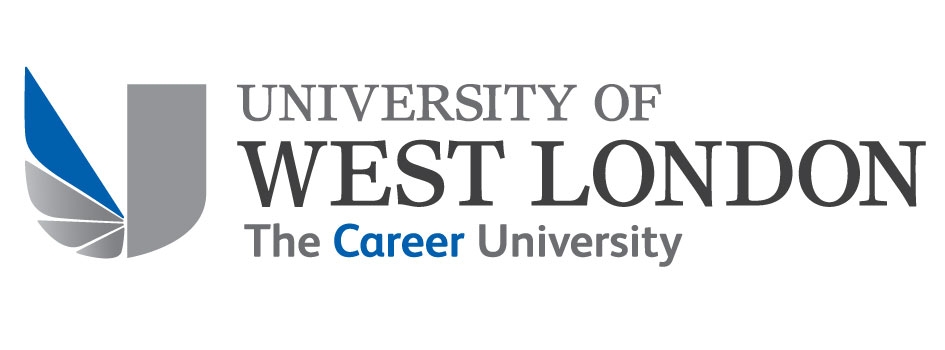What is digital transformation?
Digital transformation is a shift in the role of technology within an organisation from being a mere support function, to being integrated into all areas of business, thereby fundamentally transforming its operations and the way in which it delivers value to customers (Bughin, Deakin & O’Beirne, 2019). This can be distinguished from business process re-engineering, as it extends beyond merely automating rule-based processes, and instead, focuses more on re-imagining business models and operations (Schallmo, Williams & Boardman, 2017). There are a number of emerging technologies driving digital transformation, such as social media, the internet of things (IoT), big data and analytics, cloud computing, artificial intelligence (AI), machine learning, blockchain, cybersecurity, robotic process automation (RPA) and quantum computing. However, according to a study conducted by the MIT Sloan Management Review and Deloitte, it is organisational strategy that actually drives digital transformation, not necessarily the technology (Deloitte Insights, 2015). Nevertheless, technology has been a significant disrupter for many years now, transforming global value chains and business models and resulting in a seismic shift of skills, bringing us to the Fourth Industrial Revolution, or Industry 4.0 (Grosseck, Malita & Bunoiu, 2020).
What does digital transformation mean for the higher education sector?
The higher education sector, like many others, has radically transformed over the last few decades. From the origins of the traditional tutor-centric classroom where technology was even forbidden (Education 1.0), to the gradual infiltration of technology, first in basic ways (Education 2.0), and then on a mass-scale through user-generated internet which made it easier to connect with tutors and learn virtually (Education 3.0), education has come a long way. The higher education sector has now aligned itself to the Fourth Industrial Revolution and is undergoing a digital shift of its own, which is known as Education 4.0 (Bonfield et al.,2020).
The Covid-19 pandemic has exponentially accelerated this digital shift within the higher education sector. Since March 2020, universities have plunged head-first into online teaching and learning, and experimented with synchronous and asynchronous lectures, online learning communities, online assessments and other innovative pedagogies, and relied heavily on data analytics to monitor student engagement. Although this stemmed more from necessity than choice, there are nonetheless several benefits from this accelerated digital transformation in higher education. For instance, the sector has been able to widen participation, promote access to education and more effectively prepare students for complex and unprecedented situations around which the business world revolves. The digital literacy of both staff and students have greatly improved, and students are also able to demonstrate their ability and willingness to learn and adapt, all of which are essential traits sought by employers today. Digital transformation within higher education is becoming even more important with the entry of Gen-Z into universities. These young individuals are digital natives who live in a world of instant communication, and learn differently, with shorter attention spans and an increased ability to multitask, so it is essential to find more innovative ways to capture and hold their attention (Hernadez & Carreon-Flores, 2019).
However, it is important to note that for true digital transformation to take place, it should involve more than just a switch from traditional ways to online. For instance, merely converting a paper-based examination into a computer-based one is not in itself true digital transformation. However, when biometrics and AI are used to authenticate examination candidates, data generated from online assessments is analysed and used to improve future assessments and exam performance, and the full suite of tools is used to ensure exam rigour and security, such as question randomisation, algorithm-based question mix optimisation, prohibition of backtracking, prevention of browser search and perhaps even remote proctoring, digital transformation has truly taken place. This is just one example, but in essence, it should involve using technology to completely transform all processes, as well as the organisational culture, to meet future needs.
What’s next?
The Covid-19 pandemic has compelled to re-think and re-shape the overall higher education environment and experience. Where Education 4.0 will ultimately take us is anyone’s guess, but it is likely that a truly digitally transformed, futuristic higher education environment would incorporate most of the following technologies.
-
Chatbots
Some universities have already started using chatbots to facilitate prompt responses to the influx of student questions during key enrolment periods, direct students to the correct department or web page for further support, and even for library support services (Beckingham, 2019). As these chatbots operate 24/7/365, students can be instantly signposted accordingly, and this frees up a considerable number of staffing resources to manage more specialised queries/issues which cannot be dealt with by a chatbot. However, if chatbot technology could be taken up a notch to deliver more than mere administrative support, for instance support reflective learning, that may revolutionise teaching and learning pedagogies.
-
Augmented reality, virtual reality and mixed reality
Augmented reality (AR) is a means of layering digital information into the real world in real-time through a camera-equipped device such as a mobile phone or laptop in a manner that enhances or ‘augments’ reality (Advance HE, 2020). This contrasts with virtual reality (VR) which goes a step further by enabling a person to fully immerse in, explore and interact within a virtual, artificially simulated, 3D environment, using a special headset (Lowood, 2021). Moreover, mixed reality (MR) is also becoming more and more common, with the artificial simulations of VR being combined with the real-world interactions of AR. Fuelled by a boom during the Covid-19 pandemic, the AR/VR industry is expected to grow by more than USD 125 billion by 2024 and radically transform numerous industries (Technavio, 2021; Gonzalez, 2021).
AR/VR is gradually creeping into the higher education sector as well, with virtual campus tours, and some universities even experimenting with holographic projections in classrooms (Chowdhury, 2018, cited in Bonfield et al., 2020). Moreover, studies are being conducted on teaching international business using VR avatars so that students can practice negotiating and communicating effectively with multicultural business stakeholders (Hernandez-Pozas & Carreon-Flores, 2019). In fact, AR/VR has the potential to take higher education to new heights. For instance, with this technology, we can ‘take’ palaeontology students to a dig site in Egypt, accounting students on an audit, or arts students to the Louvre. With AR/VR, it is now possible to expose students to any practical scenario that is either too dangerous, too expensive or physically impossible to be done in a traditional classroom setting (AACSB, 2018). Such technologies could also present new possibilities for an innovative assessment approach. It could be used to complement case studies, effectively simulate real work environments for integrative assessments, facilitate immediate feedback, and inspire reflective and creative learning.
-
Smart classrooms and smart campuses
A smart classroom is a fully digitally equipped classroom which deploys a range of teaching and learning pedagogies using technology. It involves the integration of computers, specialised software/apps, assistive listening devices, artificial intelligence, AR/VR, audience response technology to facilitate and improve engagement, and learning analytics to identify areas requiring more attention and perhaps even students with mental health issues and learning disabilities. These smart classrooms might even have auto-regulated lighting, temperature, humidity, and CO 2 levels (James, 2018 cited in Owen, 2018). A smart campus would take this concept further, using advanced technologies to digitally integrate various functions to improve experience, education and efficiency (Deloitte, 2019). For instance, smart timetabling could involve taking into account multiple variables, like a particular type of classroom with specific heating/lighting to suit the activities of that specific subject, so that student concentration and engagement levels are improved. A smart campus might also use AI and other technologies to optimise resource utilisation and allocation, or analyse noise levels and inform a student of the best spot for some quiet study, or help the cafeteria staff to improve meal options based on consumption trends. The possibilities are endless.
The pandemic has not managed to bring us here yet, although with the global e-learning market estimated to grow to approximately USD 370 billion by 2026, we are surely getting closer (Valuates Reports, 2021). Any institution bold enough to venture into a fully digitally transformed smart campus using the full spectrum of digital technologies for teaching, learning, assessment and other key functions, would no doubt become a mover and shaker in the UK higher education sector and be able to gain a significant competitive advantage. Inevitably, implementing these digital technologies would come with its own set of challenges. It would involve a steep learning curve for staff, may be quite labour-intensive to deliver effectively, and there may be general resistance by staff, bureaucracy in approval and implementation processes, and a lack of financial resources (AACSB, 2018).
In conclusion, the higher education sector has come a long way in its digital transformation journey, and an exciting road still lies ahead. The need for agility and adaptability is paramount, and a forward-thinking digital strategy with a range of effectively harnessed digital technologies could revolutionise the sector in terms of innovating and improving the teaching, learning and assessment experience, improving student engagement and the efficiency of all other processes, as well as increasing collaboration and research.
References
AACSB (2018) Technologies with potential to transform business and business education: Virtual and augmented reality. Retrieved from https://www.aacsb.edu/-/media/aacsb/publications/research-reports/virtual_reality_primer_final.ashx?la=en&hash=0862554E3E46C9391CC54729098643BB4B449C28
Advance HE (2020) Augmented reality. Retrieved from https://www.advance-he.ac.uk/knowledge-hub/augmented-reality
Beckingham, K. (2019) How chatbots are changing HE. Education Technology, 20 August. Retrieved from https://edtechnology.co.uk/latest-news/how-chatbots-are-changing-he/
Bonfield, C.A., Salter, M., Longmuir, A., Benson, M. & Adachi, C. (2020) Transformation or evolution? Education 4.0, teaching and learning in the digital age. Higher Education Pedagogies, 5(1): 223-246
Bughin, J., Deakin, J. & O’Beirne, B. (2019) Digital transformation: Improving the odds
of success. McKinsey Quarterly, 22 October. Retrieved from https://www.mckinsey.com/business-functions/mckinsey-digital/our-insights/digital-transformation-improving-the-odds-of-success
Deloitte Insights (2015) Strategy, not technology, drives digital transformation. Retrieved from https://www2.deloitte.com/us/en/insights/topics/digital-transformation/digital-transformation-strategy-digitally-mature.html
Deloitte (2019) Smart campus: The next generation integrated campus. Retrieved from https://www2.deloitte.com/content/dam/Deloitte/us/Documents/strategy/the-next-generation-connected-campus-deloitte.pdf
Gonzalez, W. (2021) How augmented and virtual reality are shaping a variety of industries. Forbes Business Council , 21 July. Retrieved from https://www.forbes.com/sites/forbesbusinesscouncil/2021/07/02/how-augmented-and-virtual-reality-are-shaping-a-variety-of-industries/?sh=3ea89d782061
Grosseck, G., Malita, L. & Bunoiu, M. (2020) Higher education institutions towards
digital transformation – The WUT case. European Higher Education Area: Challenges for a New Decade, 565-581. Retrieved from https://link.springer.com/chapter/10.1007/978-3-030-56316-5_35
Hernandez, O. & Carreon-Flores, H. (2019) Teaching International Business Using
Virtual Reality. Journal of Teaching in International Business, 30(2): 196-212
Lowood, H. (2021) Virtual reality. Britannica Encyclopaedia Articles. Retrieved from
https://www.britannica.com/technology/virtual-reality
Owen, J. (2018) What makes an intelligent campus? Education Technology. 19
July. Retrieved from https://edtechnology.co.uk/comments/what-makes-an- intelligent-campus/
Schallmo, D., Williams, C.A. & Boardman, L. (2017) Digital transformation of business
models – Best practices, enablers and roadmap. International Journal of Innovation Management, 21(8): 1-17
Technavio (2021) Global augmented reality (AR) and virtual reality (VR) market 2020-
2024. Retrieved from https://www.technavio.com/report/augmented-reality-and-virtual-reality-market-industry-analysis
Valuates Reports (2021) E-learning market to reach USD 370 billion by 2026 at a CAGR
of 8.56%. PR Newswire, 17 May. Retrieved from https://www.prnewswire.com/in/news-releases/elearning-market-to-reach- usd-370-billion-by-2026-at-a-cagr-of-8-56-valuates-reports-886649451.html
About the author
Dr. Dinusha Weerawardane is a Senior Lecturer in Accounting and Finance in The Claude Littner Business School at the University of West London.

